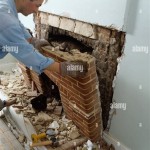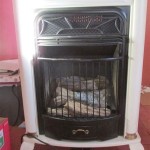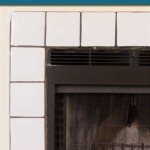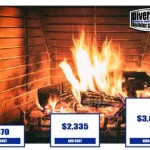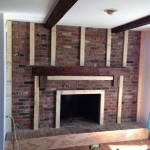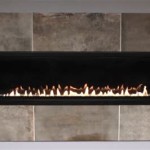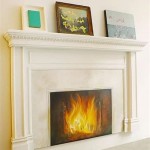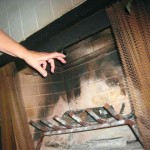Essential Aspects of Wood Burning Fireplace Insert Flue
Wood-burning fireplace inserts are efficient, affordable, and environmentally friendly heating solutions. While they offer a plethora of benefits, it's crucial to ensure proper installation, maintenance, and safety measures, including the flue system.
The flue is a critical component of any wood-burning fireplace insert as it transports combustion gases outdoors. It consists of a pipe or chimney that extends from the appliance to the exterior of the home, providing a safe path for smoke, carbon monoxide, and other harmful byproducts to escape.
Here are some essential aspects of wood-burning fireplace insert flues:
Type of Flue: Flues come in two primary types: single-wall and double-wall.
Single-wall flues are constructed with a single layer of metal pipe. They are cost-effective and suitable for short runs through unconditioned spaces like attics or crawl spaces.
Double-wall flues consist of two layers of pipe with an insulation layer in between. They are more expensive than single-wall flues but provide better insulation and reduce the risk of creosote buildup and chimney fires.
Material: Flues can be made from various materials, including stainless steel, galvanized steel, and aluminum.
Stainless steel is the most durable and corrosion-resistant material, but it is also the most expensive. Galvanized steel is more affordable but is prone to rust over time. Aluminum is lightweight and inexpensive, but it is less durable than steel.
Size and Length: The size and length of the flue are determined by the specific fireplace insert and the design of the home.
The diameter of the flue should match the size of the appliance outlet. The length of the flue must extend vertically above the roofline to ensure proper draft and prevent back-drafting.
Maintenance: Regular maintenance is crucial for ensuring the proper functioning and safety of the flue system.
Annual inspections by a qualified professional are recommended to check for any damage, blockages, or corrosion.
Chimney cleaning is essential to remove soot, creosote, and other debris that can accumulate over time and pose a fire hazard.
By understanding and addressing these essential aspects, homeowners can ensure the safe and efficient operation of their wood-burning fireplace insert flue system.

Chimney Liners Usa Fireplace Insert Venting Information

Ventis Hei240 Wood Burning Insert Rockford Chimney

Wood Fireplace Sucks The Heat Out Misterfix It Com

Fireplace Inserts Everything You Need To Know Full Service Chimney

Best Wood Burning Inserts For D C Residents

Wood Inserts We Love Fire

Chimney Flue Exhaust Kit Fireplace Insert For Corn Or Wood Pellet

How To Install A Wood Burning Fireplace Insert Fireplaces Direct Learning Center

Convert To Gas Installing Fireplace Inserts Doctor Flue
The Dangers Of Unlined Wood Inserts
Related Posts

